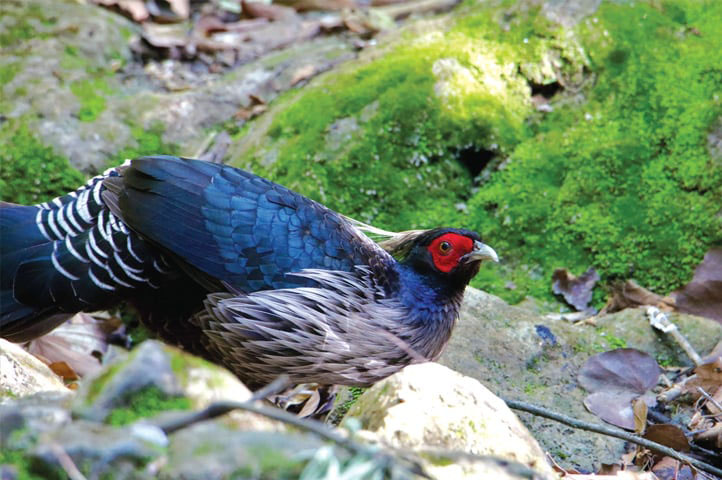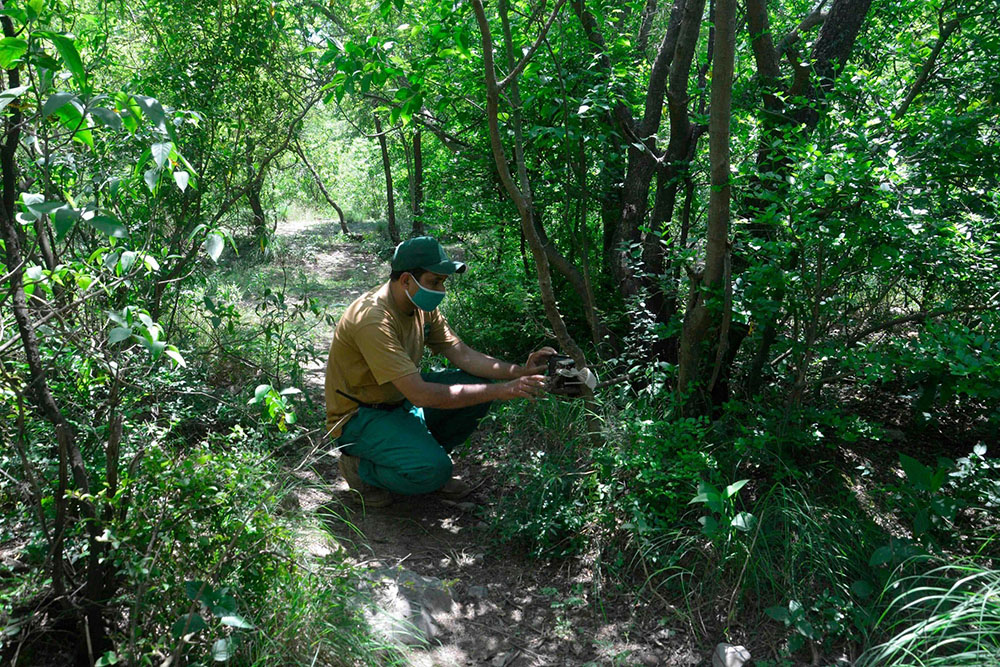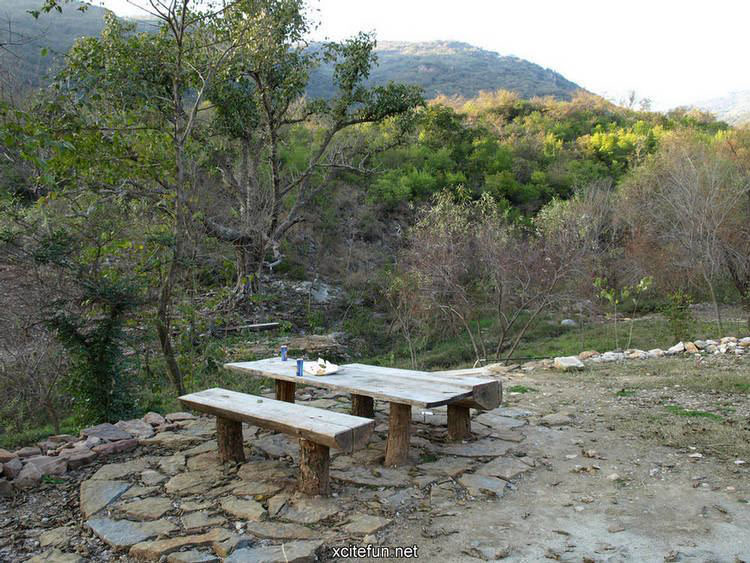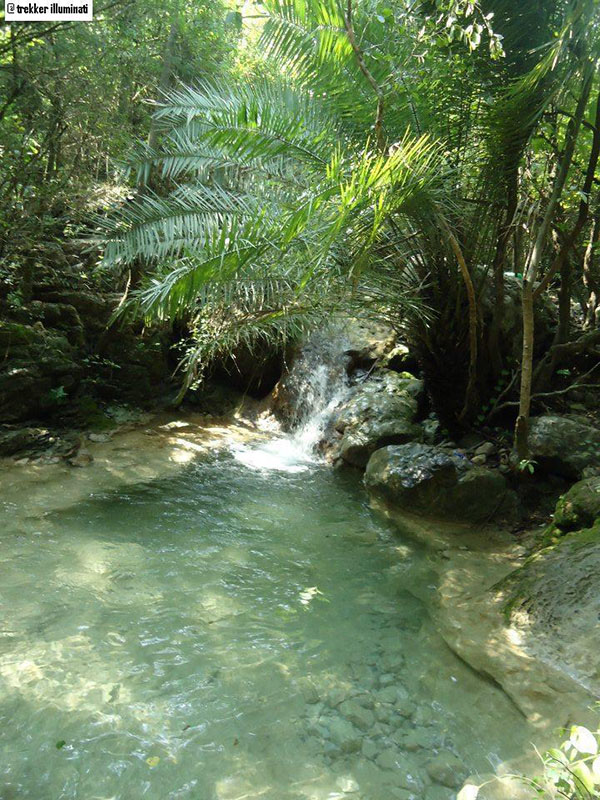Written by: Moiz Abdul Majid
Posted on: August 25, 2020 |  | 中文
| 中文
The View of Islamabad from the Margalla Hills
What perhaps gives Islamabad its defining characteristics is the presence of the Margalla Hills. Lush green and winding, the Margalla Hills are both easily accessible by road or for hiking treks and also a treasure trove of ancient history. The Hills are not only important to the city landscape but also serve as a vital ecosystem for the plants and animals indigenous to the area. Recent concern for the worsening condition of the Hills has prompted many to raise public awareness and exert pressure on the city administration to protect Margalla Hills from unchecked and large-scale human interference.
There have been a few theories given about the name ‘Margalla’. The Pashto word ‘Mar’ (Snake) combines with the Persian word ‘galla’ (Herd), to denote a gathering of snakes, alluding either to the shape of the Hills or the wildlife present within them. Another theory suggests Margalla means ‘to strangulate’. Both ideas merge in Ahmed Hassan Dani’s ‘Pakistan Through the Ages’, when he refers to the connection between the city of Taxila and Margalla Hills. He noted that Persian writer Al Biruni recorded a hill range called ‘Mar-i-Qilla’ or ‘Fort of the Serpents in the area, which became misinterpreted as ‘Margalla’.
In 1980, the Government labeled the 12,605 hectares of the Margalla Hills, Rawal Lake and the Shakarparian complex as a part of the Margalla Hills National Park. The purpose of combining these sites was to have a cohesive unit to protect the flora and fauna which inhabit it. Currently, the Park is managed by the Islamabad Wildlife Management Board, with the authority and support of the Capital Development Authority (CDA). However, due to rampant private construction in the Margalla Hills National Park, much of Shakarparian and what is now known as Bani Gala is no longer fit for public use.
The Margalla Hills have long been the city’s main attraction, and many flock towards them for a brief getaway from the city. Locals particularly gather around the picnic points of Daman-i-Koh and Pir Sohawa, the latter being the highest point in the city. For the more adventurous, the 15 hiking trails (most notably, Trail 3 and Trail 5) are a popular weekend activity, offering healthy exercise with breathtaking and peaceful views of a city from the top.
While the city of Islamabad has existed since the 1960s, human habitation in the Margalla Hills have been recorded for thousands of years. The quaint villages of Gokina, Talhar and Saidpur have some of the oldest inhabitants of the city. On the other end of the Hills, the caves of Sufi mystic Shah Allah Ditta are over 2400 years old, and he is regarded as something of a patron saint of the city. But going further back, archaeologists found footprints on rocks around the Hills, which date back to a million years. Experts note that the presence of water and food resources may have been what attracted early human settlements to the Hills.
Within this relatively small area lies a diverse and fascinating collection of flora and fauna. According to Islamabad’s assistant wildlife director, there are over 600 species of wild plants growing in the Hills, many of which are used for medicinal purposes. There are 38 mammal species, 350 bird species, and 34 reptile species (27 of which are snake species). While monkeys lounging about the Hills and the city below are a common sight, there have been sightings of rare wild leopards and jackals. Recently, due to the pandemic, the Hills experienced a resurgence of wild animals who freely roamed the sites while the humans were in a state of lockdown.
However, as the Margalla Hills reopen for public use, experts are concerned that the visitors’ return could mark a worsening of conditions for the Hills and surrounding areas. Common issues which were already present before the pandemic include littering, sound pollution (due to the hikers and vehicles), and fires. According to conservationist Kashif Mishwani, 45% of the park is in ‘bad’ shape and 8% is partially degraded.
The Margalla Hills have also been unfortunate victims of illegal construction work and deforestation, which threatens the entire ecosystem. According to a WWF spokesperson, the lack of clear demarcations in the park area by the CDA has allowed mass deforestation to shrink the habitat of natural wildlife. While the restaurants and designated tourist areas have been seen as buffer zones between man and wildlife, the new encroachments into nature would prove disastrous for the plants and animals which inhabit the area. Most notably, the extension and renovation of the famed Monal restaurant. As of early August, the State Minister for Climate Change, Zartaj Gul has prohibited the operation of any eateries in the Margalla Hills, including Monal.
The Hills are vital not just for Islamabad’s ecosystem, but for the study and preservation of the wildlife and history of the country. Instead of creating more establishments to bring about profit and economic activity, people demand more information centers for learning opportunities, legal safeguards for the flora and fauna. As for the lack of restaurants and eateries, small scale khokas should be encouraged for snacks, as opposed to large, space-consuming establishments. In an effort to curb pollution, there needs to be an extensive anti-littering campaign and quota/fee on private vehicles going up the hills. The city administration could look into public transportation, or cycling as better alternatives for transport in the hills, and encourage more physical activity, like hiking or walking.
Concerned citizens have continuously asked the government to pay attention to the environmental degradation occurring in the Hills, due to which this iconic Islamabad landscape will suffer in the long run. These steps are imperative for the scenic beauty of the Margalla Hills to be conserved for future generations.




You may also like: